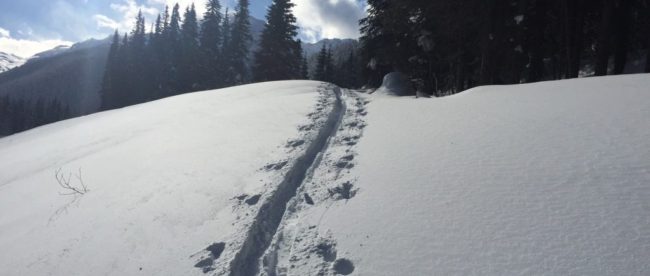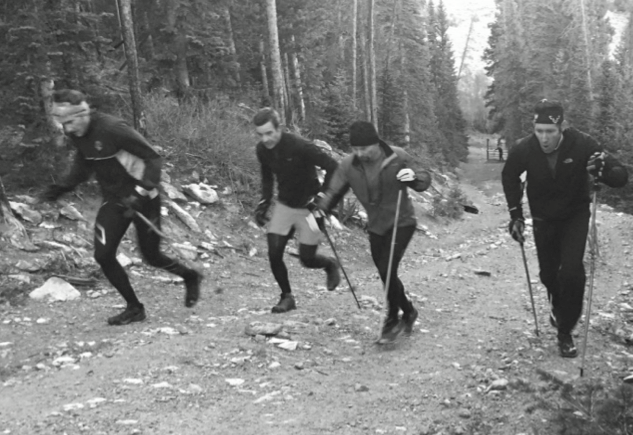Transitioning to Winter Sports – Summit Endurance Academy

You’ve started to think about transitioning to winter sports, adventuring on the snow and exploring the backcountry with your two and four-legged friends. Summers are precious in our mountain towns, and we cling to them long after the leaves have fallen. A warm fall is a blessing, but now you can feel winter in the air.
Whether you are a skier or split-boarder, options abound for backcountry skiing in Colorado. This can be anything from a quick skinny-ski behind your house to a full-on assault of a beautiful 3,000 foot line in the Gore Range. The tricky part, however, isn’t finding the terrain, it’s having the fitness to ski up whatever you want. But how do we make the transition from summer to winter without losing fitness or getting injured?
When considering increased performance, it helps to use the analogy of your body as a car. We have an engine, which is cardiovascular fitness, and a transmission, which is sport specific muscle. During a seasonal transition, we want to build the new sport’s transmission quickly, while maintaining the strength of the engine you’ve built over the summer.

Here’s How to Do It–
First, for three weeks, spend one day every third day working on the new sport-specific transmission by performing short “ski imitation” hill-repeats. Pick a hill that simulates a grade that you would skin up in the winter, and that is 2-5 minutes long. Hike up that hill with poles and your backcountry pack (that’s the ski imitation part), walk back down to the bottom and repeat until you’ve accumulated 15-20 minutes of climbing. If hiking feels too easy, crank it up to a run, but make sure you allow yourself to recover as you come back down.
Second, keep up your summer sport! On the days you aren’t doing hill-repeats, keep riding your bike or running the trails. These days can be long, but make sure they are easy, allowing you to focus your hard efforts on the new sport. By maintaining the miles of your summer sport, you will maintain the engine that you need to power the long days in the winter. It will also let you enjoy these beautiful fall days!
During this transition period, it’s important to manage your recovery by taking at least one day a week off from all exercise, eating healthy (a large variety of colorful vegetables!) and drinking 2-3 liters of water per day. It can be easy to push a little too hard during this transition and get injured, so make sure you are concentrating on recovery and nutrition.
Once you’ve finished those first three weeks, you may feel tired. If you do, reduce your training for 3-5 days, and take an extra day off (or two!). Once you are rested, jump right into three ski imitation days per week for three weeks. One of those days should be short hill-repeats, one-day long hill-repeats (7-10 minutes per climb, 30-40 total minutes of climbing), and one long day of hiking. Again, keep up the long rides or runs on the other days, and keep a day off!
After this six-week transition process, you should feel like your new sport-specific muscles are now strong enough to use the fitness that you gained from an active summer. Now you are ready to skin and ski to your heart’s content with new fitness and excitement for the winter to come!
Joe Howdyshell is the coach and owner of the Summit Endurance Academy. He spends his time racing in jorts, drinking beer, and nerding out about exercise physiology. Want to raise your badass quotient by 5 points? Email him. Joe@SummitEnduranceAcademy.com
MTN Town Magazine | We are Colorado’s Mountain Town Magazine
Copyright © 2017 MTN Town Magazine all rights reserved.
